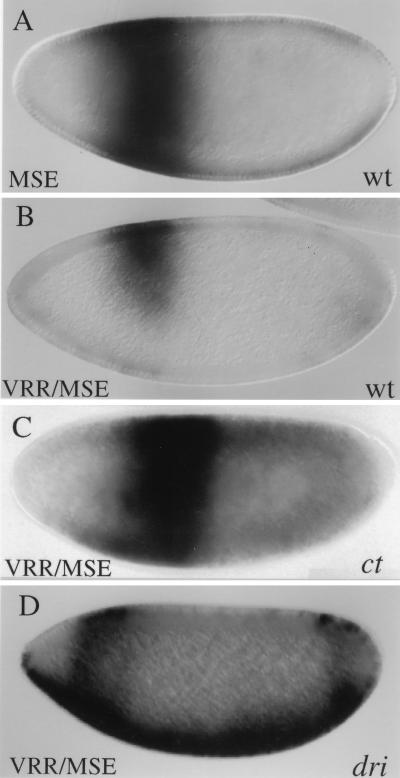FIG. 4.
Analysis of zen VRR function in ct and dri mutant backgrounds. (A through D) In situ hybridizations of whole mount embryos with an antisense lacZ probe. All embryos are oriented with the anterior to the left and the dorsal side up, and all are at nuclear cycle 13. (A) Expression pattern of the MSE/lacZ transgene in wild-type (wt) embryos. (B) Expression of the VRR/MSE/lacZ transgene in wild-type (wt) embryos. Stage 4 embryos uniformly exhibited ventral repression of the lacZ stripe. (C) Expression of the VRR/MSE/lacZ transgene in a ct mutant background. Females carrying ctC145 germ line clones were crossed with males homozygous for the lacZ transgene and hemizygous for wild-type ct (an X-linked gene). This phenotype was observed in approximately half (8 of 18) of the resulting nuclear cycle 13 embryos, as expected for a phenotype that is due to the simultaneous elimination of both maternal and zygotic gene products. It was never observed in stage 4 embryos resulting from a cross between heterozygous females and hemizygous males. (D) Expression of the VRR/MSE/lacZ transgene in a dri mutant background. The dri2 mutation was recombined onto a second chromosome carrying the lacZ transgene. This phenotype was observed in approximately one-third (11 of 28) of the stage 4 lacZ-expressing embryos produced by this balanced stock, as expected for a recessive zygotic effect.

